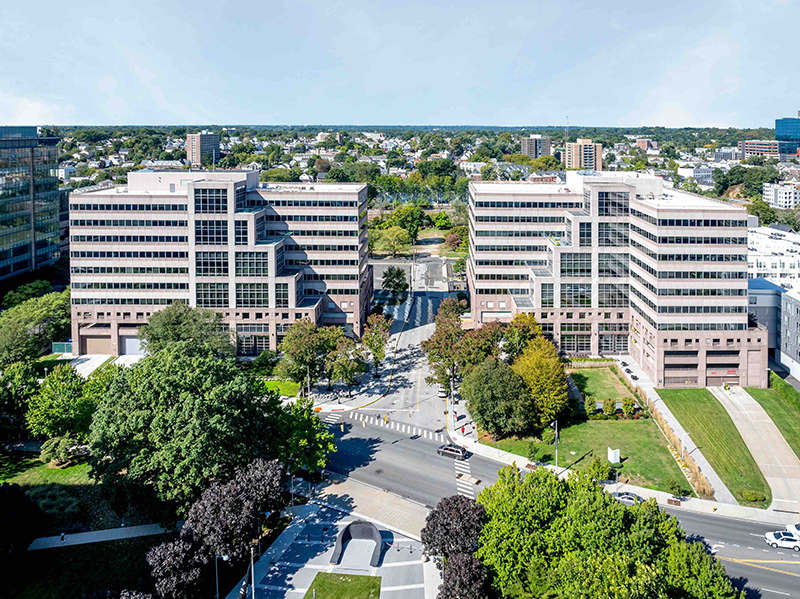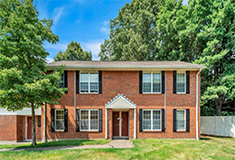News:
Connecticut
Posted: February 18, 2009
The highest and best use of real estate (or who'll pay the most)
Highest and best use really matters. It matters to the appraiser, the reviewer, to the property owner and to the end user. Highest and best is not just an academic exercise. It is crucial within the appraisal process because it provides the discussion of utility and utility is the basis for value. If something does not have utility, it can not be valued.
Definition highest and best use is defined by The Appraisal of Real Estate as "the reasonably probable and legal use of vacant land or an improved property, which is physically possible, appropriately supported, financially feasible, and that results in the highest value."
In appraisal practice, highest and best use is the fundamental premise on which value is based. In practice, appraisers and reviewers alike identify an appraisal report based on the "front" of the report (before highest and best use), the highest and best use section (usually in the middle of the report) and the "back" of the report (after highest and best use). When two appraisers value the same property and the values diverge greatly (more than 20%), it is almost always because of a difference of conclusion of highest and best use. That is why highest and best use is a pivotal part of the appraisal. The value "rides" on that conclusion.
Highest and best use is often quite easy to determine, but at times it can be quite difficult. An existing retail or industrial building often has a clear highest and best use. Then it is only a matter of identifying whether land is surplus (or not) or if there is a greater intensity of use. Most uses have levels of intensity and the highest and best use can consider these factors as well. For instance in retail, this intensity might range from pharmacies, day care, restaurant, "traffic oriented" retail or "destination" or service retail. By identifying the intensity of use, the end user, the appraiser can better bracket the subject property and the comps. Retail factors might include location, drive through bays, parking requirements, land to building ratios and building placement and layout. When an economy expands, intensity of uses expand as well. As markets contract, uses contract and in some cases, discontinue.
In a down market, buildings often go through a change of highest and best use. In these reports, the highest and best use section of the report is therefore crucial. Not only does it address what is legal or physically possible, but what is feasible and sustainable. Within the valuation of these properties, the identification of how the property is bracketed is secondary to just trying to identify ANY use to a property. Take, for instance, a former mill building with multiple stories, a former college campus that no longer serves the operator, or a movie complex or restaurant that can not meet operating expenses. These properties that operate "on the margin" might be able to operate with lower costs (ie lower rent) in which case the use does not change (although the value might). Or they might represent an example when highest and best use is changed entirely. This would warrant discussion of retrofitting the building for a new use. It may even mean thinking in terms of razing the improvements. The highest and best use process in these appraisals clearly depends on identifying an end user. Then the valuation process begins.
Market studies are ways appraisers turn to the market to attempt to figure out where the market is at. Who are the players, what do they need for space, what are they paying and ultimately, who pays the most.
Highest and best use of a property as improved pertains to the use that can or could be made of the property based on its existing improvements. For instance, in the highest and best use analysis of an office building, consideration is given to the build out including placement of entrances, layout of toilet rooms and level of quality. In up markets, quality level will keep increasing to the point of rents paid in the market. Upgrades to flooring will keep increasing as long as it gets paid for by the tenant in the form of rent. The same holds true for light fixtures, toilet fixtures and percent of other build out. As markets contract, and rents decrease and so does the intensity of build out. Medical office users are among the greatest intensity of users in the market. In areas where hedge fund users were players, the greatest intensity of build out were hedge fund occupants. They paid the most because build out costs were the most. Build out costs were astronomical and were passed through and paid by the tenants. In those markets, identifying another user that can, will or would want to absorb those costs is difficult if not impossible. The next user down will likely not pay for all the build out. While the use remains office the intensity has gone down. Typically the value decreases along with the intensity. Medical office users remain high intensity users, followed by professional office users, vet offices and service/office. In down markets like the one we are in, even a use that stays the same can lose value due to downturns in supply and demand issues.
But all buildings lose value in down markets. Smaller buildings with a clear highest and best use that appeal to owner users or just a clear immediate user can retain their value and can even increase in value. Within any appraisal report, the level of discussion of highest and best use depends on the client's needs, the assignment, the appraiser's skill, the availability of data, and sometimes time constraints.
Special use property is especially tricky to appraise because of highest and best use uncertainly. When markets turn down, these properties are even more problematic. Most of these buildings do not convert well. The more capital needed to convert to another use decreases the value. For instance, school buildings are often too expensive (not feasible) to convert (to offices or apartments) or movie theaters become only shells for retail or some other use. Or worse, the improvements no longer contribute at all and the property is only a land value. Some buildings have no clear use and then the valuation is problematic.
A property with a clear highest and best use is an easier assignment then one with an unclear highest and best use. Appraisal fees should reflect that. For some properties, highest and best use analysis in a down market is more warranted then in a stable or up market. Those properties that were on the margin before a downturn, may no longer be feasible. If the property is worth more as vacant (less razing costs) then as improved, highest and best use is razing. It all depends on use. Highest and best use matters.
Rachel Gioia, MAI is a practicing commercial real estate appraiser at Rachel Gioia Associates, Glastonbury, Conn.
Tags:
Connecticut
MORE FROM Connecticut
CBRE brokers sale of Stamford Towers - 326,468 s/f Class A office
Stamford, CT The CBRE team of Jeff Dunne, Steve Bardsley, and Travis Langer, in collaboration with David Block, completed the sale of Stamford Towers, located at 680 & 750 Washington Blvd. CBRE represented the seller, CBRE Investment Management, and procured the buyer, a joint venture of Lamar Companies











.png)